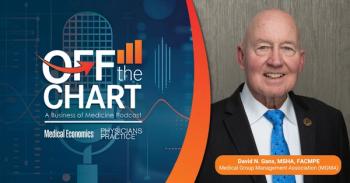
Simple Methods to Reduce No Shows at Your Medical Practice
Here are seven simple things you can do to reduce no-show patients at your medical practice starting today.
The only way to ensure that every patient makes it to the office for their scheduled appointment may be to send a bus to pick them up, and even then, rest assured there will be one or two that still don’t make it. In order to fix this problem in a medical practice, you have to understand first the reasons that patients don’t make it to their appointments.
Here are some of the most common:
1. Unavoidable emergencies - this may affect one to two patients a day. Sorry folks, there is nothing you can do about Betty’s dog getting loose, or John’s child missing the bus.
2. They forgot their appointment/wrote it down wrong/are feeling better.
3. They arrived late and your front office staff turned them away. (Gasp!)
4. They owed a balance and were concerned about being harassed about it. A patient not having enough money for their copay and losing or dropping insurance coverage is also grouped with this cause.
5. The wait is unbearable to see the clinician, causing a person to have to take off a half day or a whole day for 15 minutes or less of face time with a clinician.
So, how can you fix it?
There are some simple ways to fix no shows, and by fix, I mean some of them may turn into reschedules, or official cancellations, or even seen a little late in the same day. As I briefly stated above there is going to be a small percentage of patients, one to two patients per day for a clinic with a 30 patient per day load, that are unavoidable due to a true family emergency or other urgent issue.
Here are some simple fixes:
1. Call your patients the night before their appointments. During the last 20 minutes to 30 minutes of the practice day, it should be the job of one staffer (or more) to call each patient on the list for the following clinic day and remind them about their appointment. You can also use a texting system or send e-mails - many EHRs can automate this. I caution you about automating this system: The automation should only be a backup to a real live human calling. In other words, call them, and speak to them, and mention that they will also receive e-mail/automated/ text confirmation.
2. This could really be grouped in the first section, but it is key to getting an accurate head count of who is coming to their appointment. Make sure you have up-to-date contact information on EACH patient.
3. Encourage your patients to call and cancel or reschedule 24 hours in advance. Notice I said encourage - don’t threaten them with no show fees.
4. Have a policy for patients arriving late to their appointments, but don’t post the threatening signs in the waiting room or allow your staff to threaten them. Generally patients are not late on purpose; by handling each on a case by case basis, your patients are happier and less likely to get stuck in traffic and think, “forget it, they won’t see many anyway.”
If you think this one doesn’t apply to you or your staff. It is one of the MOST common things I see happen when my team is brought in to search out the problem. It is usually someone eager for a lunch break that turns away the patient that shows up 15 minutes late before lunch. Instead of rescheduling them for after lunch or checking with doctor to see if they could squeeze them in, they turn them away.
This also illuminates the importance of not officially closing for lunch. A staggered schedule helps to eliminate this problem. If you must close for lunch, don’t lock the door!
5. See your patients on time, be honest, and offer options if you are running behind. It is a shame when a patient has to schedule half a day off from work or an entire day for 15 minutes of face time with a physician.
6. Make payment arrangements and offer options for patients that have lost coverage, have balances, or other financial issues. It is a lot easier to catch flies with honey than vinegar (in this case money sticks better to honey as well).
7. If you are reading these and you think, “we just have bad patients this will never work” and I have heard that before, it is time to call a professional to have your clinic operations re-worked and the actual “culprit” revealed.
These simple items should reduce your no shows dramatically, and lead to a more pleasant experience for the physician, staff, and patients.
It won’t happen overnight, but when the items are implemented it will take 30 days to 60 days to see remarkable improvements. Remember, the overall key to avoiding no shows is to be flexible and accommodating with your patients, and have winning customer service. There will be the patient or two that abuses this system, but the key is not to punish all of your patients for the actions of a few.
Find out more about Audrey "Christie" McLaughlin and our other
Newsletter
Optimize your practice with the Physicians Practice newsletter, offering management pearls, leadership tips, and business strategies tailored for practice administrators and physicians of any specialty.










